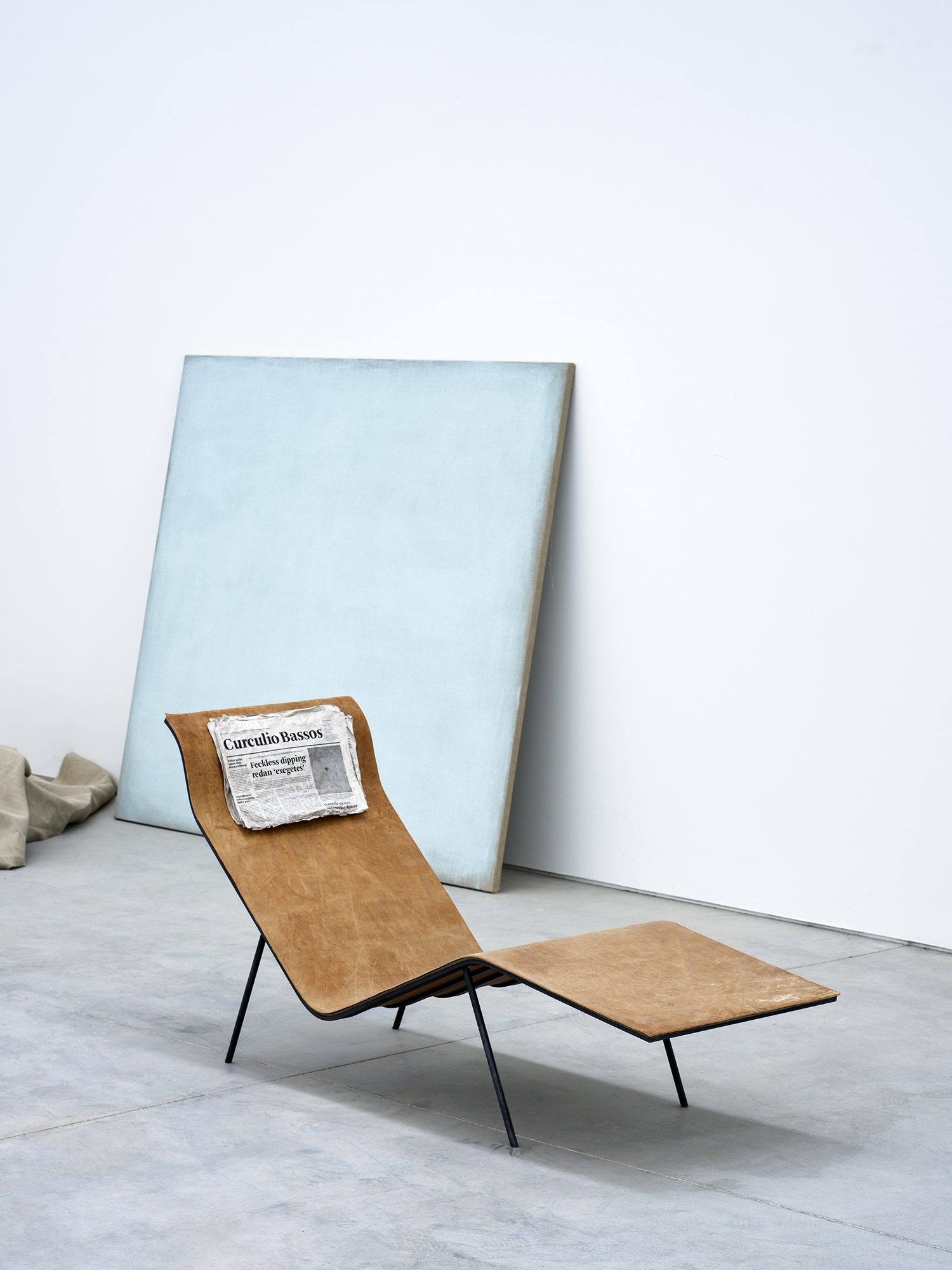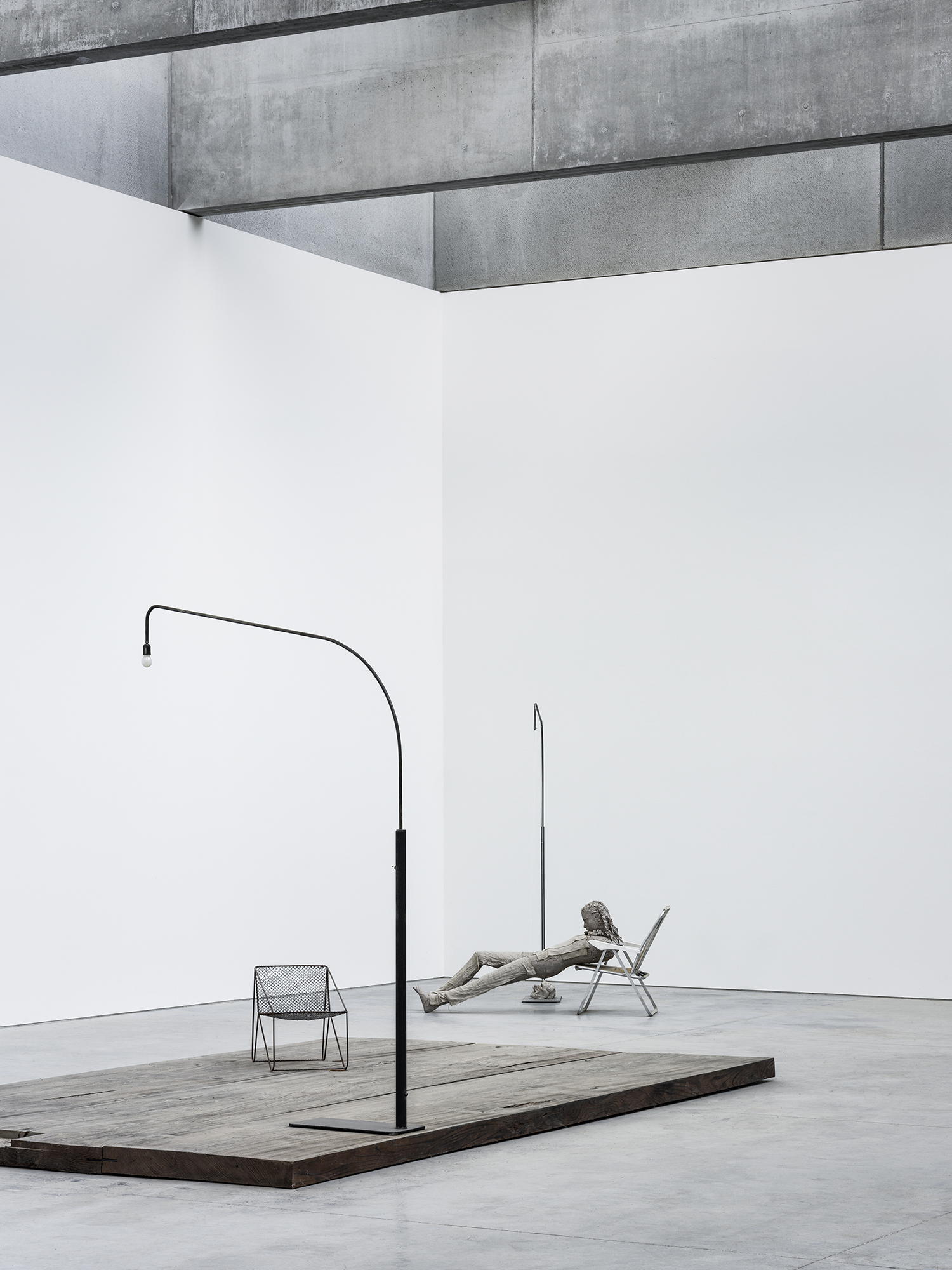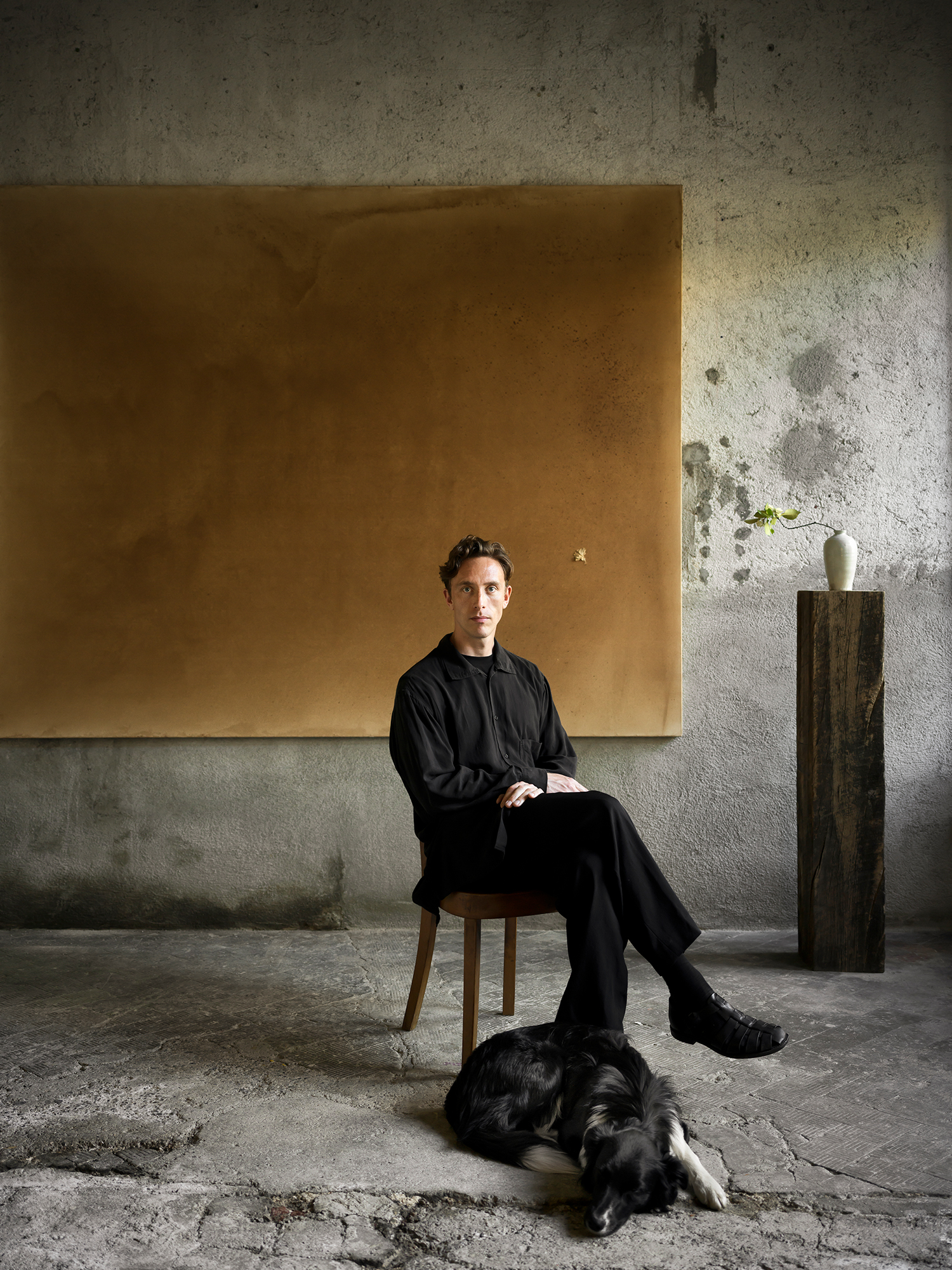
Grey Matter
Words by Harriet Thorpe
Artist Mark Manders’ studio near Ronse is a zone where his thoughts and ideas rise, emerge and take form into idiosyncratic conceptual installations, objects and sculptures that embody portraits of the innermost self.


It is mainly museum directors who visit artist Mark Manders (b.1968, Volkel, the Netherlands) inside his vast studio stretching 4,000 square metres in a ‘forgotten’ industrial area near Ronse, Belgium. The lithe industrial-looking building with a concrete and wood structure designed by Ghent-based Coussée Goris Huyghe Architecten is a tardis of workshops, studios and empty rooms between which Manders roams – making sculptures, installations, drawings and films, often using found objects, words, buildings and portraiture as tools and themes.
Manders is perhaps most well-known for his sculptures of bisected busts and heads made of bronze moulded and painted to look like unfired clay, scrap-like wood and other raw, seemingly-found materials. These appear in international museum collections, public spaces and sculpture parks across the world; as unsettling depictions of frozen interior turmoil, barren yet beautiful reminders of the complexity of humankind. Other sculptures and installations are arrangements of objects; furniture, books, newspapers, pencils, bones and even dead animals – often framed by plinths, rooms or architecture that become stages for these abstract compositions. One sculpture ‘Composition with Four Yellow Verticals’ (2017–2019) includes yellow-painted pieces of wood and newspaper pages
‘made of all existing words’ he says.
In one series of works, collections of objects represent imaginary buildings, which Manders sees as a complex portrait of thoughts and movements of their owner, with objects and their positions representing inner thoughts and actions. The first work that communicated this idea was in 1986, with ‘Survey (First Floor Plan from Self-Portrait as a Building)’, a floorplan formed by the objects on Manders’s desk that, to him, represented rooms. “It’s like one gigantic frozen stage set where I imagined myself thinking and acting. As if I’m creating an imaginary building with all these objects. I can show you these objects, but the building is imaginary,” he says.
His pursuit of a self portrait as a building has been described by critics as a ‘monumental, self-searching project’ and an ‘endless self-portrait in the form of sculpture, still life, and architectural plans’. Recently, Manders sculpted one of these portraits of Albert Van Wassenhove, the owner of the post-Brutalist ‘House van Wassenhove’ designed by architect Juliaan Lampens in 1974, located in Sint-Martens-Latem, Belgium, who lived there until his death in 2012. For an exhibition (running 20 September – 19 November 2023), he piled up drawings, photographs, tools, artworks and found material, communicating the chaos of Van Wassenhove’s hoarder-like tendencies.



